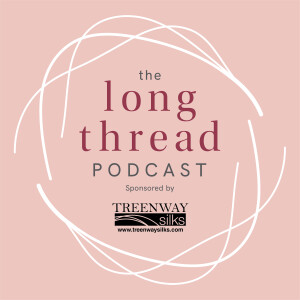
You may think of silk as just slick and shiny. (There's a reason we say "as smooth as silk.") But as she chased the thread of silk across Asia and through villages of Assam, Karen Selk discovered that it can be much more: It can be gold, copper, cream, and white. It can be slick or toothy, hardy or delicate. Most of all, it can be a delight for fiber artists and a way of life for men and women whose livelihood depends on worms, cocoons, and moths.
Besides what most people imagine what they think of silk, Bombyx mori, and even the less-common honey-colored tussah silk, there are a number of special silks available to today's fiber artists. They include different species, such as the shimmering gold of muga or the red or cream of eri. There are preparations from intact cocoons to pierced cocoons to mawata, top, and bricks, plus "waste" such as carrier rods, pulled sari silk, and the chocolate-colored peduncle stems of some tasar cocoons. Even within a single country—India—the variety of silk is rich enough to keep a fiber artist happily occupied.
Karen and her husband Terry founded Treenway Silks in 1977 and spend the next decades importing silk yarns from China, discovering unusual forms of silk in India, dyeing a huge palette of colors, and supplying material to weavers, spinners, stitchers, and other fiber artists. Since selling the business, she has continued teaching and writing; her book about wild silks is due out in Fall 2022.
This episode of The Long Thread Podcast is sponsored by Treenway Silks.
More Episodes
 2024-10-19
2024-10-19
 2024-10-05
2024-10-05
 2024-09-14
2024-09-14
 2024-09-07
2024-09-07
 2024-08-24
2024-08-24
 2024-08-11
2024-08-11
 2024-07-27
2024-07-27
 2024-07-13
2024-07-13
 2024-07-06
2024-07-06
 2024-06-15
2024-06-15
 2024-05-04
2024-05-04
 2024-04-20
2024-04-20
 2024-04-06
2024-04-06
 2024-03-23
2024-03-23
 2024-03-16
2024-03-16
Create your
podcast in
minutes
- Full-featured podcast site
- Unlimited storage and bandwidth
- Comprehensive podcast stats
- Distribute to Apple Podcasts, Spotify, and more
- Make money with your podcast
It is Free
- Privacy Policy
- Cookie Policy
- Terms of Use
- Consent Preferences
- Copyright © 2015-2024 Podbean.com






